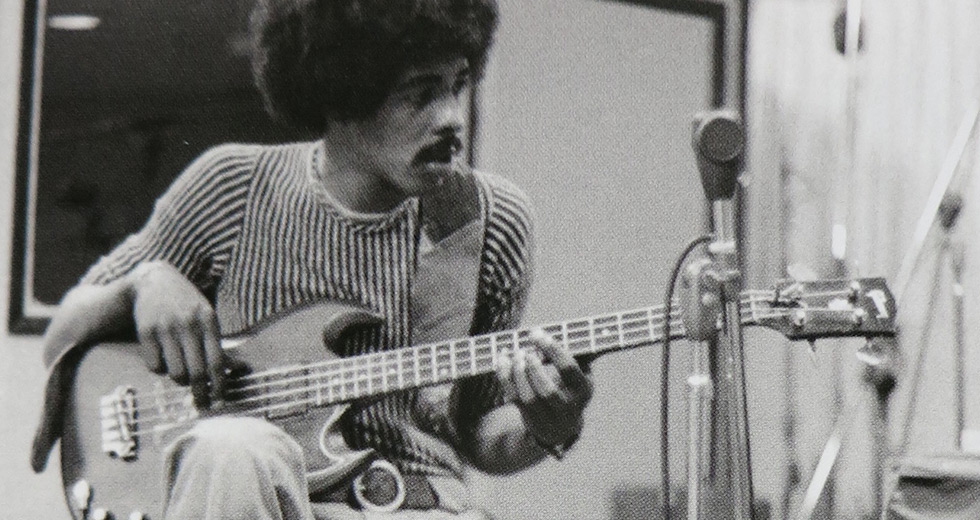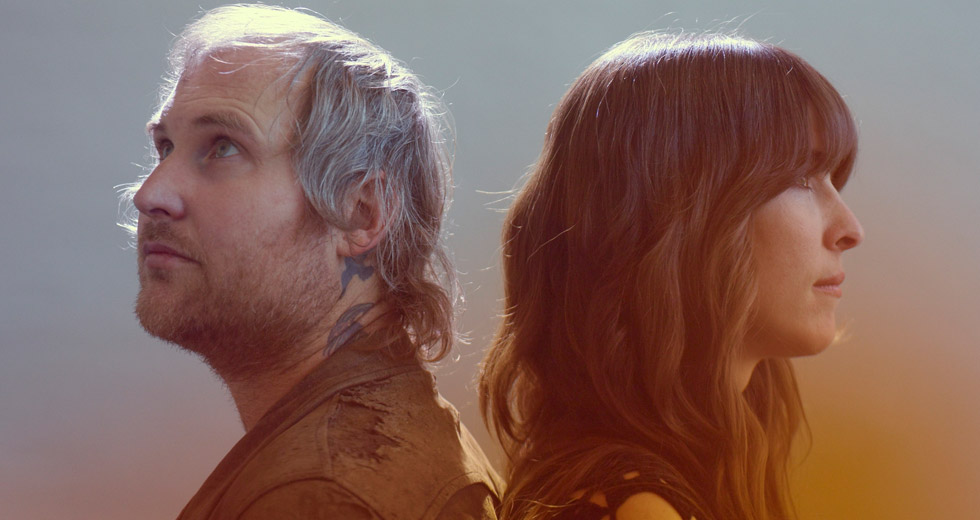Music As Medicine: An Interview With New Age Icon Steven Halpern
Steven Halpern’s music is 100% scientifically engineered to perform wonders. Built upon the ancient ‘music as medicine’ traditions of the Tibetans, Greeks and Egyptians, and armed with a rigorous academic research backing, Halpern’s music is geared towards the sole purpose of helping listeners encounter ultimate relaxation – right down to the cellular level.
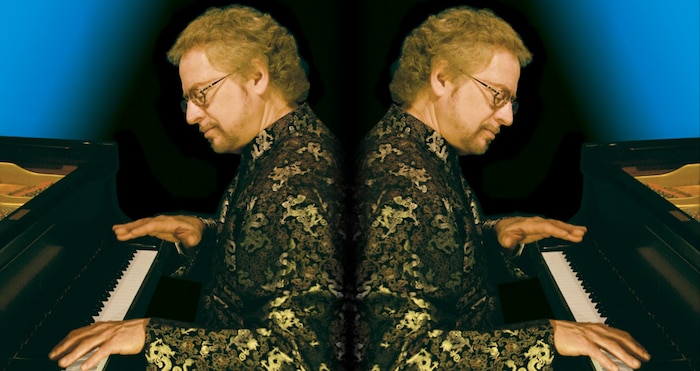
As one of the first musicians recording under the ‘new age’ tag (along with Iasos, who we also interviewed here), the New York-bred, Marin County-based Halpern has released no less than 70 recordings and sold six million combined albums throughout his four-decade career – spanning from sleep-aid tools, to massage therapy soundtracks, to cosmic synth ambiance, to subliminal affirmations intended to heal prostates. He has recorded inside the Great Pyramid, written books on aligning chakras with sound, been sampled for 1990s rave bangers and been profiled on CBS’s 48 Hours. Excluding Yanni (who doesn’t count due to overwhelming garishness), Halpern is the de facto iconic figure of new age.
Having begun his musical career as a classically trained jazz-rock trumpeter, playing with the Bay Area psych-fusionists The Fourth Way, Halpern became dissatisfied with performance-oriented modern music in the early 70s and began to experiment in the ancient traditions of using sound as mind-expanding medicine. He attended graduate school at the University of Buffalo (where he audited classes with jazz bassist Ron Carter and drummer Joe Chambers on the side) to explore the connections between music, consciousness and healing by employing the sophisticated new technologies of brainwave biofeedback and Kirlian aura photography. After noticing profoundly medicinal results from his particular strain of non-structured, spacey Fender Rhodes playing, Halpern began shopping his music around on the burgeoning metaphysical conference circuit. It caught on.
His first major LP, Spectrum Suite (a modified version of his debut Christening For Listening, which contained the crate-digger classic “Something For Every Body Suite”), offering listeners a color-coded chart for balancing each of the body’s chakras. Utilising non-Western scales, non-traditional chords and rhythmless songs, Halpern pioneered the technique of creating non-anticipatory music – that is, music where the listener has no idea where the song is going, thus avoiding the inherent predictive anxiety listeners experience with standard pop: “Here comes the chorus...”
Halpern continued to develop this technique throughout his career while at the same time expanding his sound palette to include Kurzweil synths, tribal drums and singing bowls, releasing varied albums such as the cosmic synth sound of Rings Of Saturn, the chant-based Intuition: Inside The Great Pyramid and his current bestselling sleep-aid Deep Theta.
Below, we interviewed Halpern about his musical journey, composition techniques and unlocking the in sound to take you far out.
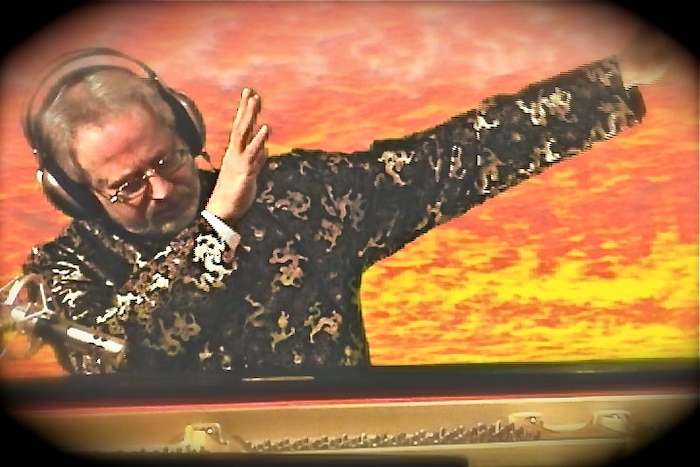
It’s pretty interesting that you began composing new age music via a jazz and rock background. How do you see those interrelating?
I was playing trumpet at the time, and I remember the way I felt when I first heard someone improvising, and the concept of hearing music in my head and being able to play without reading someone else’s notes was fascinating. When I tapped into that creative process, that was life-changing. To be in that energetic field of creativity before I had any of the scientific words was something I was drawn to magnetically.
Rock in the mid-60s started to get very creative and new chord progressions were coming in. Instead of just a blues, or 1–4–5 progressions, we’d have a 1–flat 7th–4 progression, or a tonic down to the flat 6th, down to the flat 7th, back up to the tonic, that I felt viscerally and was really turned on by. I started doing experiments with the audiences to watch what happened when I played chord progressions that people had never heard, and to see if the way I felt was the way other people were feeling. And I tried to identify certain patterns that I could bring in with my band so we would get a guaranteed to get a positive response if we were playing original songs people had never heard to get past the familiarity response. These were the first times some of these patterns were used. Of course there were some other groups that did this, like The Beatles, Hendrix. Some of the great all-time songs like “Purple Haze”, “Foxy Lady”, all with the flat 3 and flat 7 chords that had never been used. There was a power that was inherent in that. So, exploring that was one of the ways I was able to turn myself on.
Musicians are the antenna of the human race.
I always enjoyed having the power and the control to make myself feel good with music, by playing certain notes and certain chords, where I didn’t have to rely on outside stimulants, on outside people and at some points with an outside band. When I was shifting from trumpet to guitar and ultimately to keyboards that became even easier. But it was really just paying attention to what was happening inside and how good it felt when I was playing certain things. And then when I shared them with others, I realised this was a good thing and was more interesting to me than just playing a top 40 cover song.
As things started evolving, and as I started hearing music pouring into my head internally, there came with it a strong urge to share music with others with the purpose of not just trying to create a one-time experience, but to use music as a tool and resource to help other people tune into higher vibrations and inner peace – of feeling good in another energy spectrum than what they were used to in the higher energy spectrum of jazz and rock. It was something that my body needed and my spirit needed. Coming from not so much an ego position, but tracing back to the more ancient roots of music with the musicians in ancient Greece, and China and Egypt, who were also healers and priests.
As I would research ancient anecdotes and the mythology, I was wondering why this information was not known by musicians. And it became clear that part of my mission was to re-introduce the concept the of music as a healing art, and to do that we needed new music and new music forms. And what I experienced when I met Iasos in ’73 was that there were other people that were hearing new music also, which was great because I knew it wasn’t just me and I wasn’t crazy. Musicians were opening up around the world to new forms of expression that would take the audiences to new places. There wasn’t so much a commercial aspect to it, but it was like ‘this is what’s up!’ As Ezra Pound said, “Musicians are the antenna of the human race.” A lot of us artists were hearing music that was in tune with the changing zeitgeist and vibe of the world. We were basically the soundtrack of what was called the ‘new age’. and that’s one of the reasons the field became known as new age music, even though many of us were using other words like ‘space music’ or ‘consciousness music’ or ‘transformative music’, things that the music industry literally told us: “Too many letters, we need something short. You play for ‘new age conferences’, we’re going to call it ‘new age music’ and like it or leave, that’s what the genre is going to be called.”
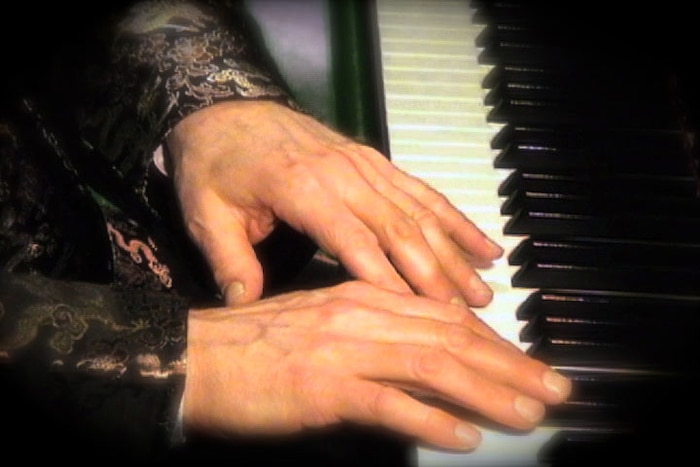
How did you make the transition from jazz and rock to venture out and go solo with this new sound?
Starting in about 1965, my first week at the University in Buffalo, I had an improvisational experience playing trumpet with some high energy jazz musicians that literally changed my life. What I experienced four years later when I came to California was something similar where the music was flowing through people and me, but in a much more peaceful style. When people heard it, they liked it and asked, ‘where can we get it?’ This was before cassettes were invented. Where this started happening for me was at the world famous Esalen Institute where the leaders of the Human Potential movement would come through on a weekly basis. I had been hired to be part of the staff, and I was told by leaders, ‘we like the peaceful response your music is giving people, but if you want to be taken seriously, you need to do some scientific bio-feedback research to get some objective data on the effects.’ That was what got me involved in going back into graduate school and hiring a group of scientists; this new music that I was recording on my reel-to-reel was producing a significant, different response than traditional classical music or rock or jazz. This is around ’71–’73.
I started taking it around to record labels and they said, We’re not interested in it. Where’s the beat? Where are the words? There is no commercial potential.
I received my masters degree because of this research. I had no money and no idea what to do with my degree or my music. I started taking it around to record labels and they said, ‘we’re not interested in it. where’s the beat? where are the words? there is no commercial potential.’ The same thing they told Frank Zappa. At a Christmas party in ’74, I met a recording engineer who had just built the first independent multi-track studio on the West Coast and I was his first client in 1975. After recording there, I started learning how to be an independent record label, basically by the seat of my pants. There weren’t any models for me, certainly in new age. I had to explain to media and stores why they should stock my first vinyl LP. I would say, ‘this is music that will create and experience for the listener that they want. It will help them find peace, help them to relax, and support their meditation,’ etc.
My inner guidance told me not to go the way some other musicians went, like Iasos, and talk more about where the music is coming from. I was focusing more on what the music will do for the listener, why it’s important, why it’s medically significant. That was something the media would pick up on, although there was pushback from the medical field and the pharmaceutical field. There was clearly a huge audience that wanted a legal, non-addictive, pleasurable way to decrease stress and get into more meditative states. That became the focus of my first forays into advertising and marketing. The record industry did not have a place to put my records in 1975, so I also had to create an alternative marketing by using alternative bookstores, meditation stores, crystal stores, health food stores, yoga centres. I took my albums to places where people like me would go, because that’s all I knew. I didn’t study business. In the early days, they would say things like, ‘we’re a bookstore, we don’t carry music.’ I remember saying, “No, you’re a lifestyle resource support centre, people who read these books are going to be looking for music to listen to while they read these books.” And while I was trying to sell this, a woman came up and overheard, and said, “I’m looking for music to help me meditate, can I buy that?” That’s how I made my first sale into a bookstore.
I have to throw in an aside, the album you're talking about here, Christening For Listening, is quite popular in the hip hop world. The 12-minute “Something For Every Body Suite” is notorious due to the drum breaks at the end. Quite expensive too.
Wow! I had to toss loads of that title out after it didn’t sell because we couldn’t even recycle them. Interesting to mention the drums. Part of the deal I had with the drummer, Otis, was that he would play for a greatly reduced fee if I gave him some solo time on the record. He would be gassed to know about that. Also, Iasos played on side two as well. That’s great that that album has that response out there. I did hear that in the early 90s, in England or in Europe, at some of the raves, people were putting drum breaks underneath my albums. I’m smiling right now, but I’d be smiling more if people sent me royalties for this as well. (laughs)

And Christening For Listening later became your mega-hit Spectrum Suite.
Right. I was working with the electromagnetic spectrum and exploring the healing properties of the sound and colour spectrum. I obviously wasn’t the first person to be talking about this. It had been going on for thousands of years. A lot of the terminology relating to this stuff, specifically the chakras, was more esoteric back then and unfamiliar to a lot of people, so I went with the more scientific approach by calling it Spectrum Suite. By the time the late 90s rolled around, and the field of yoga had become mainstream and people knew what chakras were, the concept of even the electromagnetic spectrum was holding back the album. When I later changed the title again [to Chakra Suite], sales quadrupled overnight. People were now looking for albums relating to chakras.

When you’re talking about healing music, can you briefly delve into what this is about?
Our body, mind and spirit – our human instrument – has built-in rhythms, such as our heartbeat, the rhythms of our brainwaves, etc. There are certain patterns that relate to higher efficiencies and higher levels of health and well-being. Relaxation is one of the keys to supporting the bodies own innate healing energies. Most music keeps you focused on the external music stimulus – which is great, it’s part of entertainment. For healing to take place though, we need to go inside, so the music becomes a vehicle to support the healing, rather than an end and goal in itself. Understanding that, it becomes more relevant to speak about the music triggering, and getting the listeners into certain states of consciousness.
“Our cells are pre-wired to shift into these higher order functions – this is part of what I seek to do through my music.”
This is not just through slow meditation music, this stuff goes back 25,000 years. In modern times we talk about church bells, but the use of Tibetan singing bowls and Japanese temple bowls go way back. There is no sound, no melody, but the tone and resonance shifts ones brainwaves immediately upon hearing it. Our cells are pre-wired to shift into these higher order functions – this is part of what I seek to do through my music. The way that the rainbow is set up relates energetically to the seven tones of the major scale, relates to the seven major energy centres or chakras. When we work with them in an ascending sequence of raising vibrations (like c,b,d), you tap into a pre-existing template in our body that can be triggered to stimulate healing responses. It’s not a matter of virtuosity, or that ego component. And I say that with all due respect because I came from that tradition. In the New York jazz world, if you were a trumpet player, the faster and higher you could play – the more sophisticated you could play certain scales and throw in certain polychordal harmony in relation to these changing chords – it didn’t matter if you were a schmuck. If you could do that, people liked you. In this other world of music, who you are really matters.
Another fundamental truth is that music is a carrier wave of consciousness, so your own state of being, personality, your emotional and spiritual state plays through you, and impacts the audience. This is true for jazz musicians, classical, rock musicians. That is why people like John Coltrane and Pharaoh Sanders would have such an uplifting effect upon their audience, because of their spiritual intensity. And it’s also why some great musicians working in the classical realm, you’ll find that even though the notes are perfect, the energy is very weakening, because there is so much ego and not love coming through the music. Understanding that there was a scientific basis for this for me was very empowering.

When I’m in the studio, first and foremost, I let the music lead me. I’m not thinking scientific theories, but that will be a context within which I set my intention. I intend for, 1) the music to be musical and beautiful and uplifting, but 2) also to create an environment in which people will have positive experiences on their own that they can listen to over and over without getting tired of it. And that’s the key to composing in the way that I compose that does not use some of the more familiar contexts and goes outside of the traditional compositional structures, in the same way that Iasos created new compositional structures that had never been done before – and you never knew what was going to happen next.
And there’s a predictive element in most modern music, and classical, that you are trying to avoid, correct?
Yes! This was something that has always been a part of my presentations and workshops, pretty much since the 70s. And one of the main examples of why my music is so different. This is called the anticipation response. It deals with familiarity and pattern recognition. If I sing this ascending pattern ‘do-re-mi-fa-so-la-ti…’ Did you hear that missing note in your head even though I didn’t play it? That’s great in many cases, but it locks you into a certain left brain analytical modality – what we call the ‘paralysis of analysis’. You can’t get relaxed if you’re always projecting into the future and anticipating where the music is going. You can only relax in the present moment.
My music is all about guiding people to live in the now. I gave it the name ‘scalus interruptus’, which has a little sexual overtone. Many people would read about relaxation through music, try to use regular music, and think the whole concept was out in space. The problem is they were using the wrong music. Most music is locked in time. My music is outside of time.
“This kind of music is very powerful, but it’s not something that most audiences can deal with.”
This isn’t to say that rhythms aren’t great – you can get into trance through other forms of music. In certain traditions, the use of very powerful drums were known to elicit a trance state. The electric dance genres like techno or disco relate somewhat to this, but is ultimately something else. This kind of music is very powerful, but it’s not something that most audiences can deal with. Where you would hear that music is typically in religious ceremonies, so the magical aspect was very important. There is a little of that in rave stuff, but it quickly becomes more industrial and that’s a whole other thing.
The fact that music can be used to elicit certain trance states was also highly developed throughout Africa, came west through the slave trade and evolved in the Caribbean and Afro-Cuban, based on that trance induction music. As a musician who was always interested in eliciting at will certain responses, the more I could learn about this world the better. Interestingly, during the eulogies for Whitney Houston, there were a couple of interviews with Ricky Minor that referenced some of what American gospel music, where they talk about bringing in the holy spirit, it’s what this trance induction is. You could see this very clearly in the sermons and services in many gospel churches. I think for white America, the death of Whitney Houston was some of the first time many of them experienced this, these specific uses of rhythm and music and chords and also shifting into falsetto in the voice that triggered very specific intentional responses.
And so your responses are intended to relax...
I’m using the awareness that it’s not all mysterious. There are ways that we can control and direct and set the intention to evoke certain responses in music. When I’m not thinking, my ego is not being activated, and I’m merging and becoming one with the music. Whether it’s high energy percussion ensemble, or just in the spaces between keyboard notes, my goal is to lose the individual experience and to become one with the music, and go through the music to the silence that’s on the other side, where the music just plays automatically. I just become the instrument of the instrument. The source of music is not ourselves, but comes through us and becomes a vehicle to make that tremendous experience of music audible for others to hear.
Which is a similar approach to jazz improv, of course.
Absolutely. In my early days, I would interview many of these people. I never got to meet John Coltrane – I almost met Alice before she passed unexpectedly. And both of those individuals, of course, were inspirations. And I was inspired to find out that Alice liked my music and it was being sold in her ashram, which is an interesting closure of that loop. When a lot of these musicians were interviewed, they knew. I remember discussing the power of different chord progressions, and some of the new chord progressions that had recently began showing up in rock. The flat 6–flat 7–1 tradition that’s part of rock’n’roll hoochie coo and so forth. You can change the way an audience responds by playing chords that aren’t in the traditional blues pattern or rock pattern. A lot of these people were aware of this, but most of them would not talk publicly about that, but it was certainly part of my early inspiration. This knowledge that the source of the music was not themselves, but was coming through them. This had a huge impact on me as I began working on healing music.
“Between the health industry and the pharmaceutical industry, there is a lot of money to be made in not letting people know that they can use certain kinds of music to relax.”
Listening to music in a ceremonial, religious context, or listening to a concert, you have a communion. You have many people breathing, inspiring each other, with brain waves linking in and synchronising together. That’s a powerful group experience. When people are listening to my music at home, it’s just them and the music. They don’t have the support of all the other people. And these other types of music often do not work at home. That was one of the other big revolutionary things I brought through – I could create an experience that people could have by themselves at home, any time they wanted. That was a breakthrough as the whole technology moved from LPs to more personal things like the walkman, and now every other form of personal portable technology that allows you to set your mood and dial in the brainwaves that you want, or the state of being that you want at will.
Is this ability to dial in a more surface level instant fix? Like the mood organ in Blade Runner...
Part of the problem is that this portable technology took music out of the concert hall, out of the living room and ultimately turned it into musical wallpaper. As people are multitasking, they are not paying attention to the music and giving it its respect and reverence. You could listen to the same piece of music as background and foreground and you’ll get a deeper response than if you just have it in the background. On the other hand, what we saw for many years was that the quality of digital sound was basically getting worse, and now finally it’s starting to get better. Some of the criticisms of early digital records were that they sounded tinny and brittle – and that was justified. One thing I discovered was that many of the engineers who were doing CD mastering had hearing loss – and they were mastering based on what their damaged high-frequency threshold ears could hear.
You did an interview with Daniel Redwood where you argued that based on the compression, rhythm and noise found in much of today’s urban pop, the nervous systems of youth are tuned differently than they were, say, 30 years ago.
Absolutely. It’s not just the music. When I asked Timothy Leary about that in 1994 – we were sharing a stage together at a conference – he said that because the younger generations are coming up exposed from birth to a different energy field and hyper-changing technological equipment and rhythms, their bodies are acclimated in a way that those of us who are now in our 60s are not. So, there is a generational thing. And of course, when people who are my age were young, there bodies could handle things that they can’t now. But the other thing, with all the increased wifi and electromagnetic pollution, even if there were no music, just having all the cellphone towers and satellite transmissions, very deleterious effects are showing up in younger people. That’s why we are seeing more obesity, more cancer, more psychological problems. And the cellphone industry is obviously not thrilled to have that kind of information publicised. The research with the cumulative effects of these frequencies haven’t been done. Same goes for some of the high intensity techno, disco and hip hop music – you can’t study people in the same way that you can study animals or plants. We don’t know a lot about how we are being affected.
I’m one of the people that have had more sleep problems the last couple of years, which is one of the reasons I’ve focused some of my recordings on soundtracks to fall asleep and soundtracks to enhance mental functioning. I need more help with that, and when I listen to what else is available in the field, I hear albums that are either so boring or irritating – they didn’t work for me. It was clear that knowing the research and knowing what I know about it, I’m in the perfect position to work on a more functional solution both for myself and for others who want to tune into that, while also first and foremost keeping things musically interesting.
But you just tapped on a huge area where we will be seeing more and more research coming out. However, there are a lot of people that don’t want this research to go out there. You know, Mozart composed in Vienna, the caffeine capital of Europe! He wasn’t composing to help people relax, they needed to be stimulated, they needed audio caffeine. Between the health industry and the pharmaceutical industry, there is a lot of money to be made in not letting people know that they can use certain kinds of music composed with the intention of evoking a relax response. Not to say we have to listen to this stuff all the time, there is always time to listen to music for other reasons. But when you need to relax, when you need to support your own health and well-being, listening to most music is like drinking three cups of coffee before you go to sleep – that caffeine is going to keep you up! It’s a huge, huge issue.
I learned a line by Jean Houston, the wonderful research of consciousness. She said, “knowing these things allows us to self-orchestrate on the spectrum of consciousness.” That’s another great way of understanding. Using music as a specific resource like certain foods or certain drugs – a glass of wine or legal or illegal stuff, it is the most ancient technology we have to alter consciousness.
